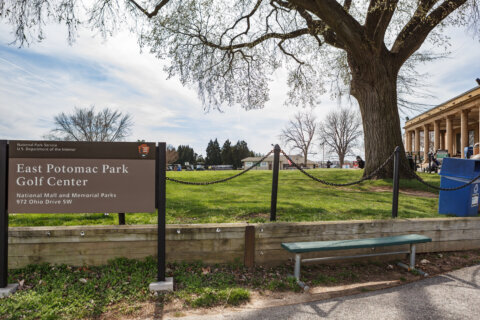This video is no longer available.
The finishing touches are being put on the new World War I Memorial in D.C. It’s a three-acre site sitting right along Pennsylvania Avenue between the White House and Freedom Plaza.
On Friday, WTOP got a preview of the new memorial ahead of its opening next weekend.
The centerpiece is a 60-foot wall of sculptures, 38 in total, which aims to tell a story from the start of the war all the way to the end. It took sculptor Sabin Howard about four and a half years to make it.
“The story is of a soldier, a dad, in an allegory for the United States where he leaves home, enters into battle,” said Howard. “From that horrible experience, he’s transformed, shellshocked, and then he returns home to hand his daughter, the next generation, the helmet. And she is World War II.”
What stands out the most is the vivid detail given to each soldier’s face. Anyone looking at it can see the emotion — whether it’s fear, despair or pain. The dirt, sweat and tears are all there to behold.
“We spent an average of 650 hours on each one of these figures, working from a life model. And a lot of those models from the middle to the end of the sculpture are veterans from the Marine Corps, Navy SEAL and Army Rangers, and so their faces had all seen PTSD,” said Howard.
“And that kind of changes the whole thing because, now all of a sudden, you’re sculpting real people … You’re actually learning from them what it’s like to go into war and then leave your family and come back completely changed,” he added.
Howard used words like energy and power to describe some of the sculptures, arguing that “emotion is movement” as he stood in front of the wall.
“This is (a) symphony happening behind me, where you go from quiet to like maximum animalistic energy, to a primal scream, and then all of a sudden quiet,” said Howard. “Where you go to cost of war, where it’s dead silent. It’s actually death. And then from that moment of being shell shocked, you go into a parade scene home, which is this sense of energy being turned on again. And then the final scene, the brakes get put on, where it’s really quiet, where the dad returns home, he’s changed. He’s awkward when he hands his daughter the helmet, she’s completely still, and the weight on her neck, it’s heavy.”
He added, “It’s not like a ‘Yahoo!’ moment. It’s like when you send people to war, they come back, they are not who they were when they left. And that needs to be recognized.”
Organizers behind the memorial spent the last 16 years getting to this day.
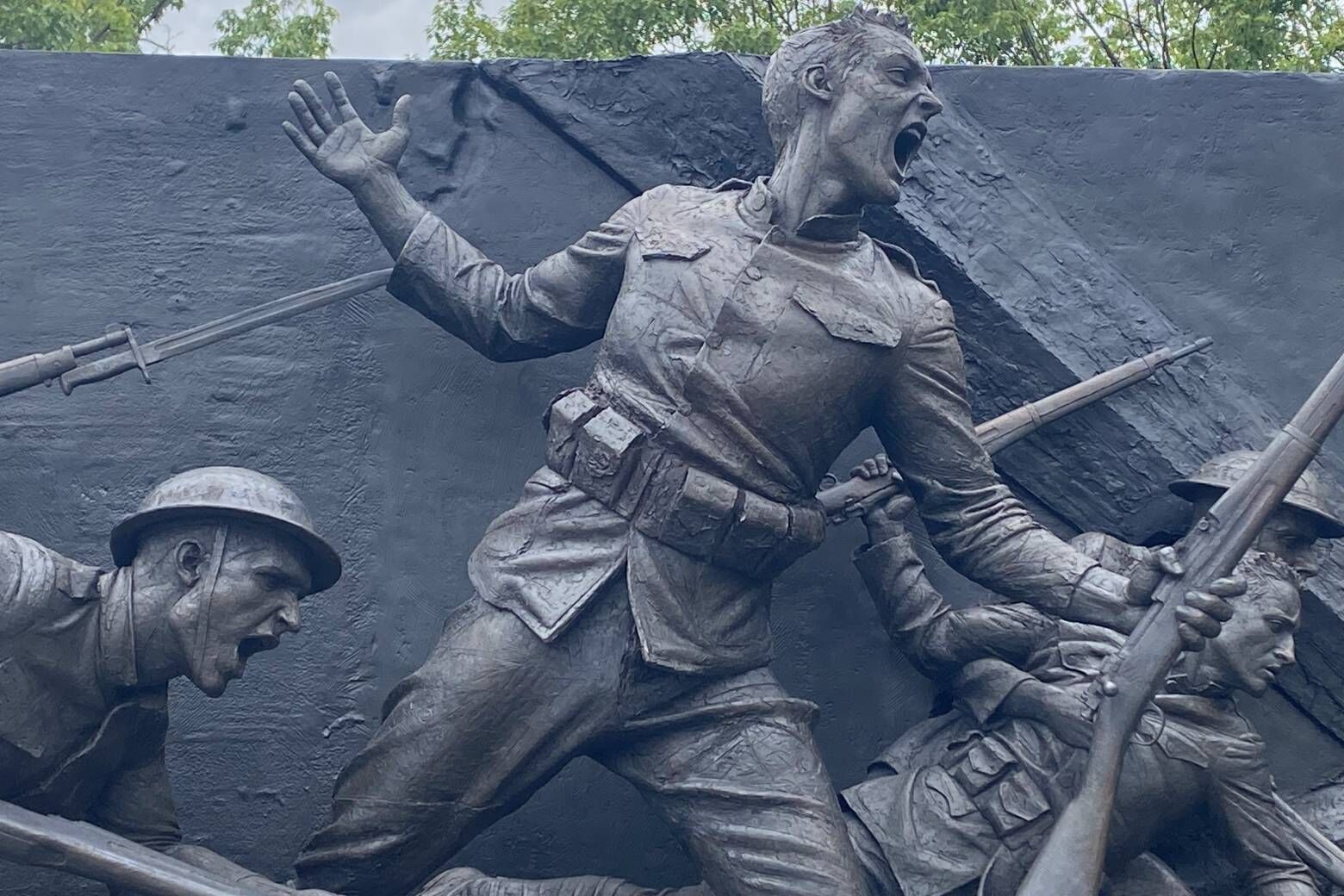
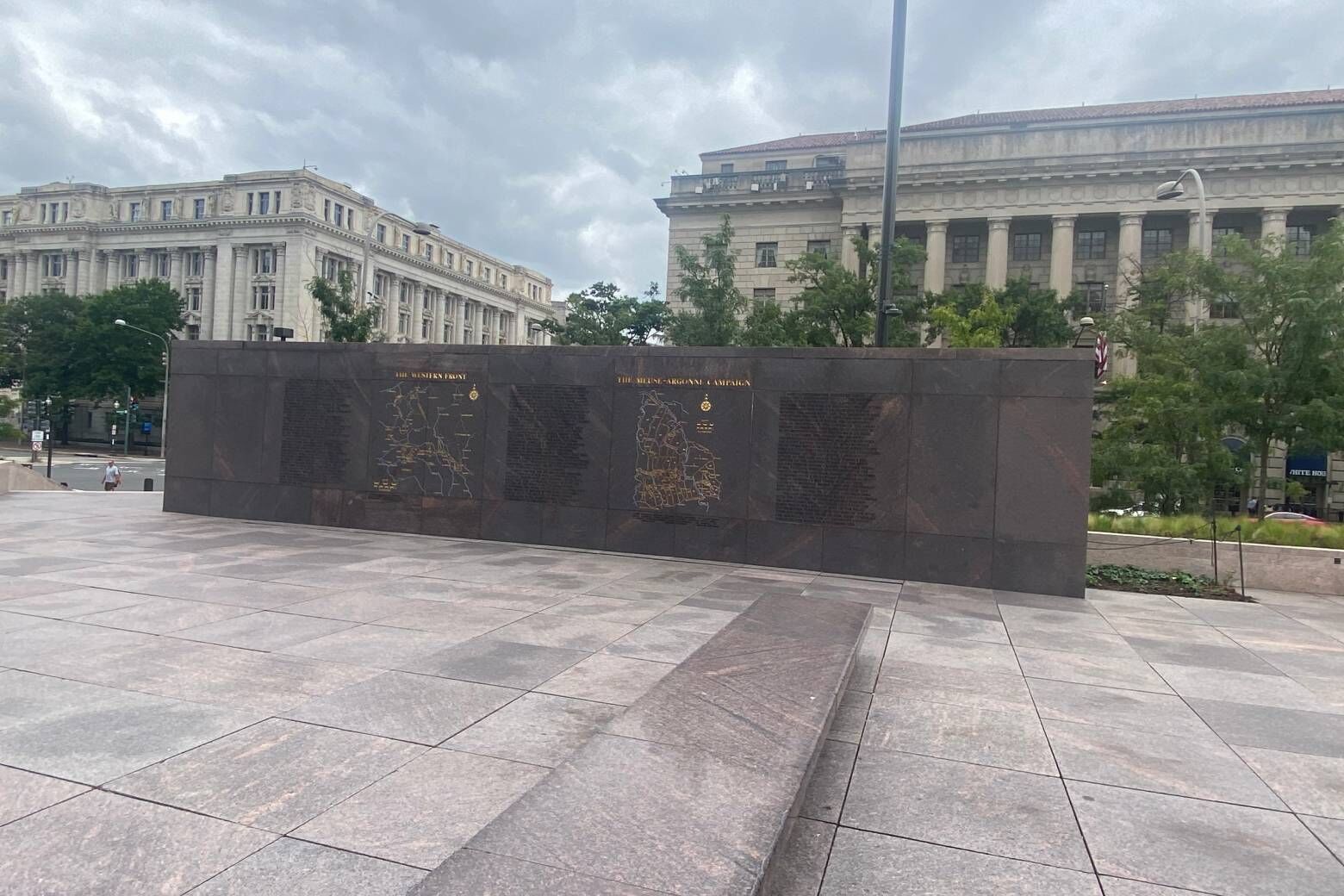
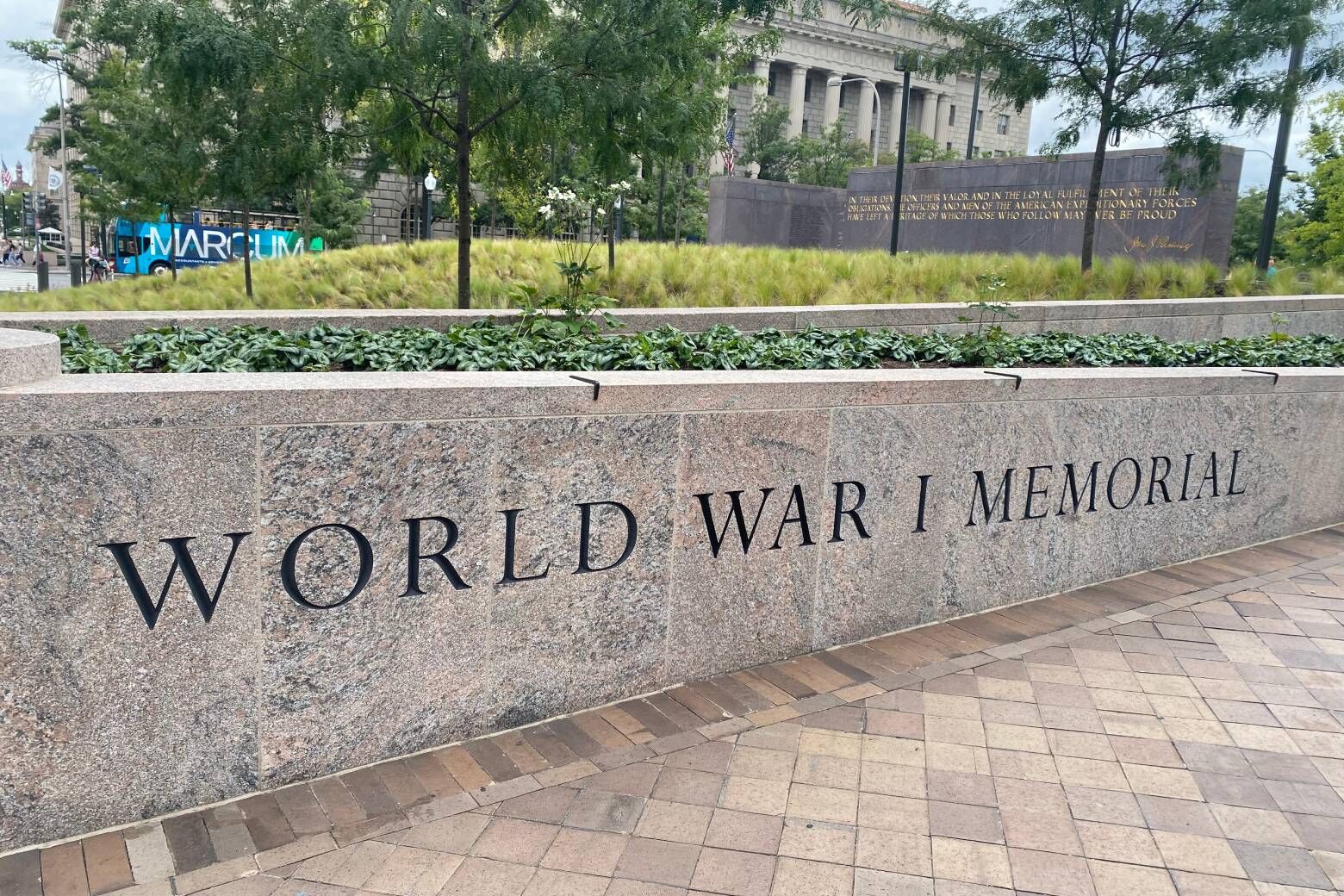
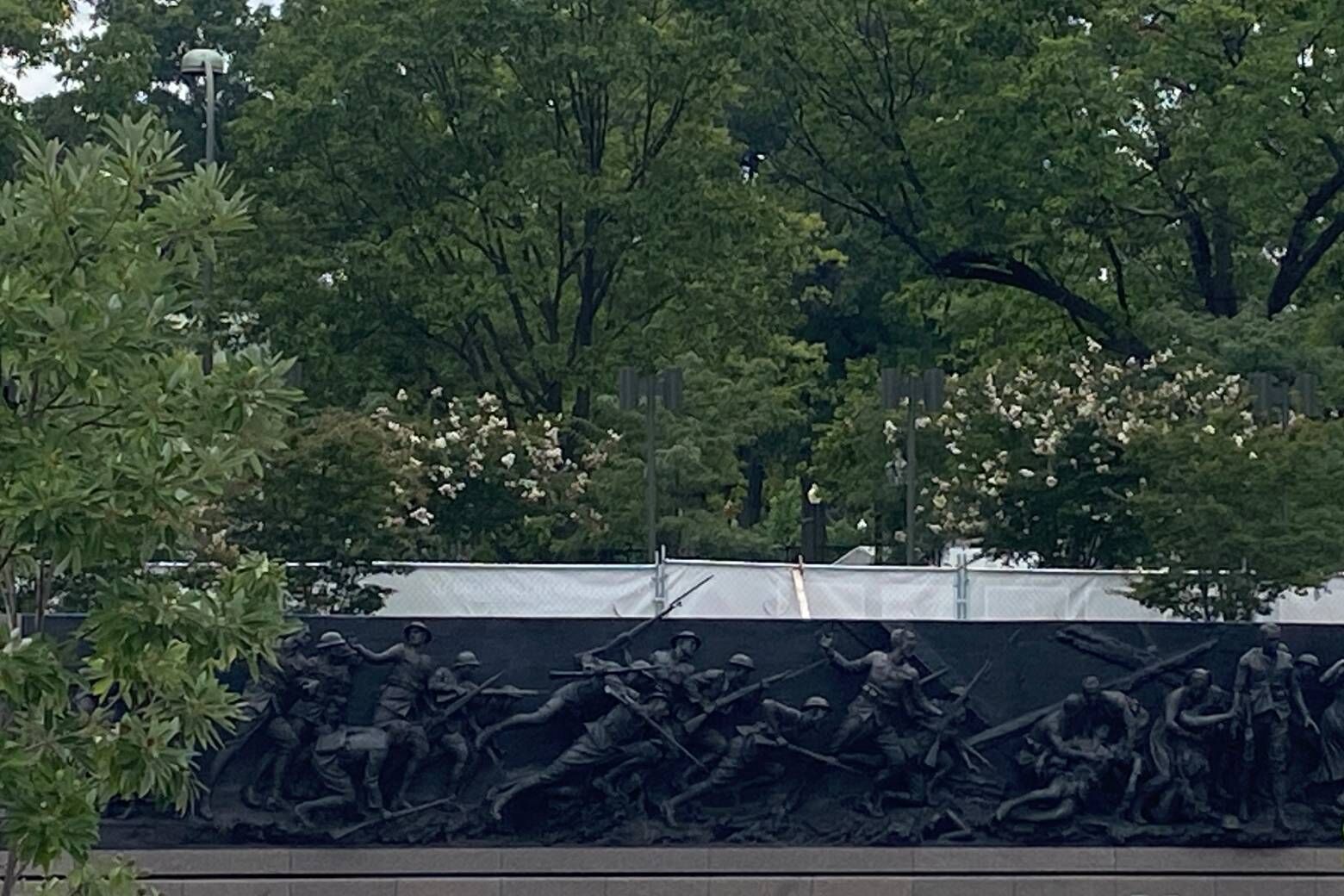
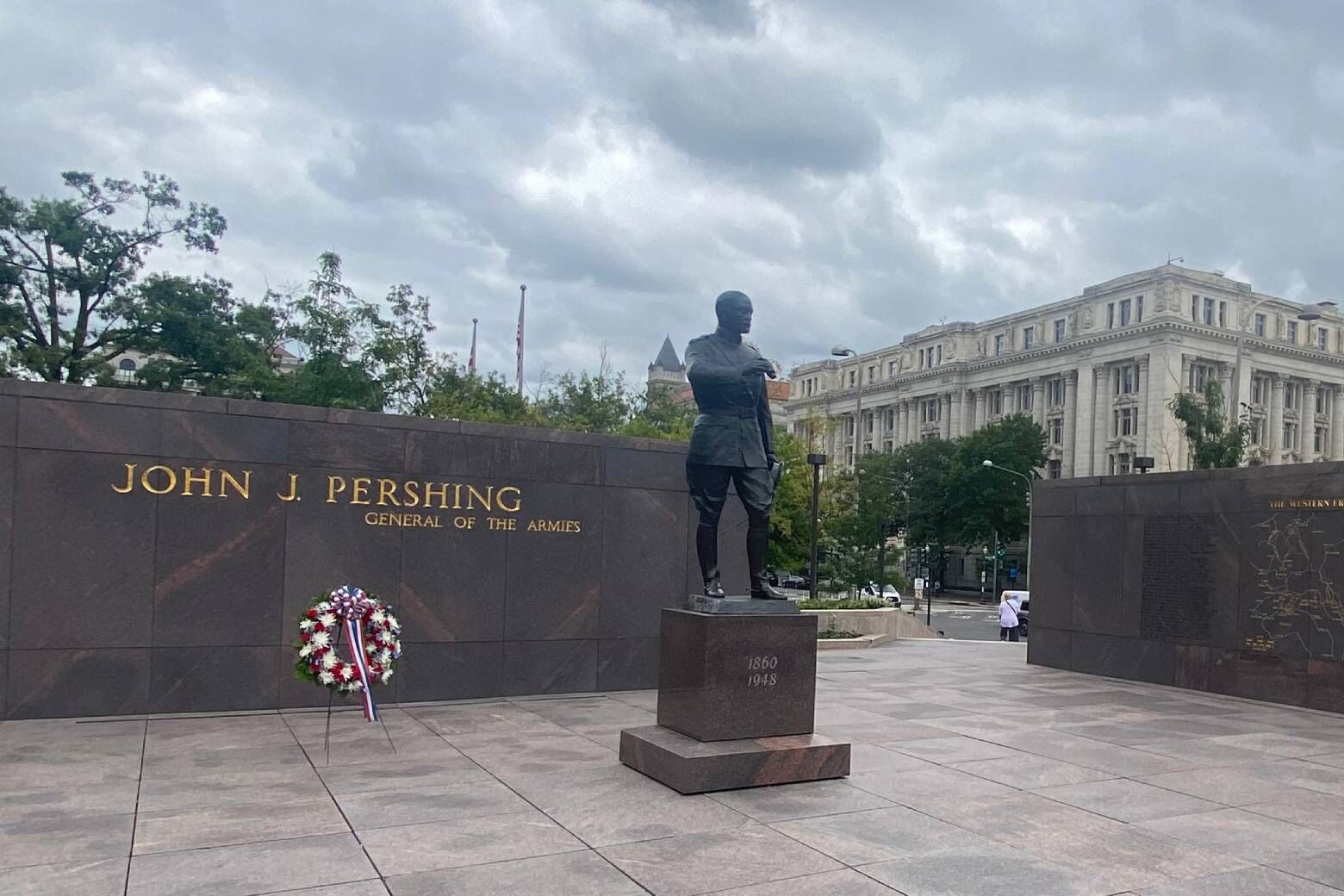
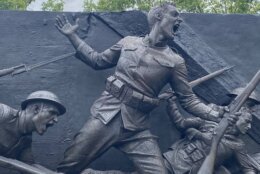
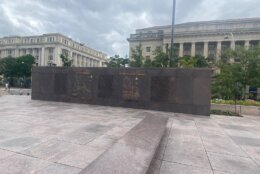
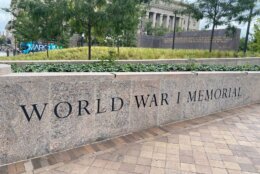
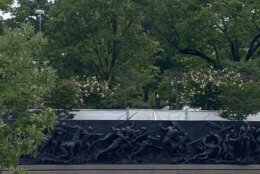
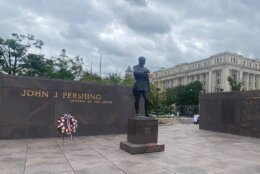
“World War I is largely forgotten in our country, and it was the most consequential event of the 20th century that led to the other wars that are commemorated on the National Mall,” said Edwin Fountain, the former vice chair of the World War I Centennial Commission.
“It’s also important because the scale of sacrifice in World War I of American forces is largely unknown. We lost more American soldiers in World War I than we lost in Korea and Vietnam combined. … And so the significance of that war, the character of American service and accomplishments … needs to be commemorated by a national memorial,” he added.
Those who are behind it feel that the location — between 14th and 15th streets Northwest, right across Pennsylvania Avenue from the Willard Hotel — actually provides a better home for the memorial than the National Mall does.
Besides the proximity to so many downtown hotels and attractions, the amount of space it provided to honor those who served in World War I is much bigger than what the National Mall can provide. The memorial site includes a seating area, a wall with a series of quotes and maps related to the war, and a rehabbed Gen. John J. Pershing Memorial.
It’s also where the World War I homecoming parade crossed in the 20th century.
“I just want people to leave and be interested in World War I, and want to ask questions and want to know more,” said Joe Weishaar, the lead designer for the entire memorial. “It’s the war that changed the world in so many ways, and it’s such a valuable piece of history to really wrap your head around.”
But anyone who visits will be drawn to the centerpiece sculpture, and many will find it hard to take their eyes off it.
“Oftentimes, war memorials aggrandize what happened to cover up tracks,” said Howard, the sculptor. “I didn’t do that. I made something to elevate human beings and bring them forward as the primary subject of a war memorial. It’s not about the governments or the elites. It’s about the ordinary people that are caught into the vortex of having to go to war.”
“If you look at this, this is a memorial to humanity, not to war. It is, yes, the national World War I Memorial, but humanity is what the primary concern and interest of this project is.”
The first illumination ceremony for the memorial will take place at 7:15 p.m. on Friday, Sept. 13. Several other activities are set to take place Sept. 14 and 15, including live musical performances and historical presentations, as well as authentic World War I vehicles from the National WWI Mobile Museum.
Editor’s Note: A previous version of this story referred to Edwin Fountain as the vice chair of the U.S. World War I Centennial Commission. This story has been updated to reflect Fountain’s status as a former vice chair following his resignation from the commission in 2019.
Get breaking news and daily headlines delivered to your email inbox by signing up here.
© 2024 WTOP. All Rights Reserved. This website is not intended for users located within the European Economic Area.




